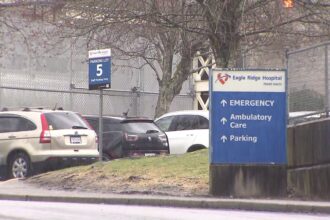The death of a 16-year-old student in a British Columbia classroom has triggered a sweeping examination of how emergency services respond to crises in schools, with recommendations that could reshape provincial protocols and potentially save future lives.
A coroner’s inquest jury concluded deliberations late Friday, delivering 25 recommendations aimed at transforming both ambulance services and educational policies after carefully examining the 2021 death of Kaydence Bourque, a Grade 10 student who suffered a medical emergency at his Nanaimo high school.
“This case highlights critical gaps in our emergency response systems that simply cannot be ignored,” said Dr. Jeanette Harper, who presided over the five-day inquest. “When minutes matter, our institutions must be prepared to act with both speed and competence.”
Among the most significant recommendations is a call for mandated and standardized first aid training for all school staff across British Columbia. The jury heard testimony that while some personnel attempted to assist Bourque during his medical crisis, response efforts were hampered by inconsistent training levels and unclear emergency protocols.
The BC Emergency Health Services (BCEHS) also faces scrutiny, with the jury recommending significant overhauls to dispatch procedures. Evidence presented at the inquest revealed that despite multiple 911 calls from the school, paramedics were dispatched without the highest priority code, adding precious minutes to their response time.
“When we analyzed the timeline of events, we found that classification decisions made in those first moments had cascading effects on the emergency response,” explained Kate Morris, lead counsel to the inquest. “The jury clearly believes those systems need immediate recalibration.”
School administrators across the province will likely face new requirements for emergency planning. The jury recommended that each school develop comprehensive medical emergency response plans, conduct regular drills, and maintain easily accessible emergency equipment including automated external defibrillators (AEDs).
The recommendations extend to technology improvements as well. The jury called for enhanced GPS capabilities in ambulances and the implementation of real-time tracking systems that would allow dispatchers to identify the closest available units regardless of jurisdictional boundaries.
Bourque’s family, who attended each day of the proceedings, expressed both grief and determination following the jury’s findings. “Nothing will bring Kaydence back to us,” said James Bourque, the teen’s father. “But if these changes prevent another family from experiencing what we’ve gone through, then perhaps some meaning can come from our loss.”
The BC Ministry of Education and BCEHS now have 30 days to formally respond to the recommendations, though neither is legally obligated to implement them. However, public pressure is mounting for meaningful action, with advocacy groups already mobilizing to ensure the jury’s work translates into policy changes.
Paramedic union representatives voiced support for many of the recommendations while noting persistent staffing and resource challenges. “Our members want to provide the fastest, most effective care possible,” said Cameron Eby, president of the Ambulance Paramedics of BC. “But we need the systems, staffing, and support to make that possible.”
Education advocates emphasized that emergency preparedness must become a cornerstone of school safety planning. “Schools are responsible for hundreds, sometimes thousands of young lives each day,” noted Sandra Murphy, a former school trustee who testified at the inquest. “We need to ensure they have both the training and resources to respond when medical emergencies arise.”
As British Columbia confronts these institutional challenges, the broader implications extend beyond provincial borders. Emergency response and school safety experts from across Canada are closely watching how BC responds to these recommendations, with many suggesting they could serve as a template for national standards.
Will it take another tragedy before these critical safety recommendations are fully










